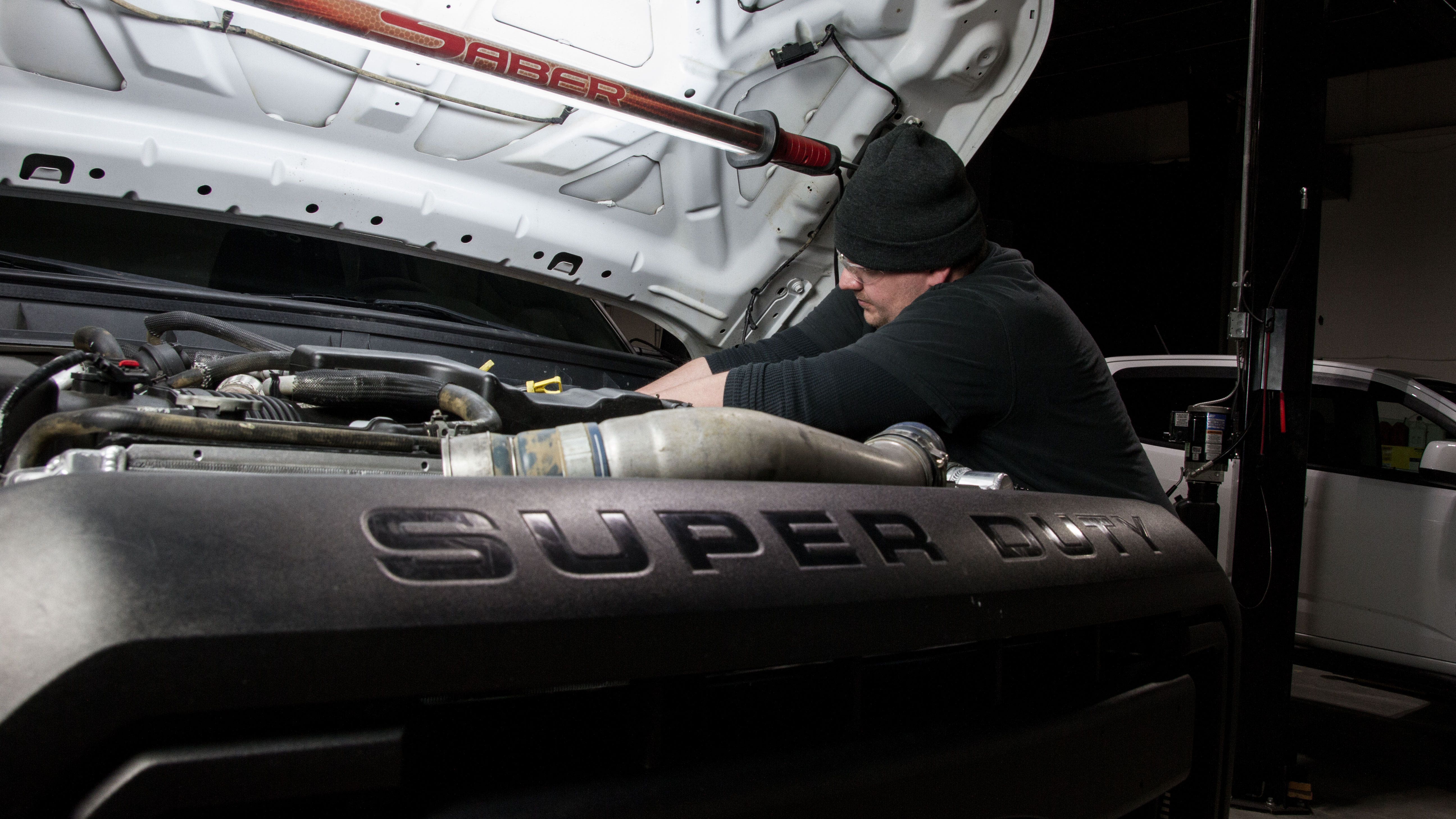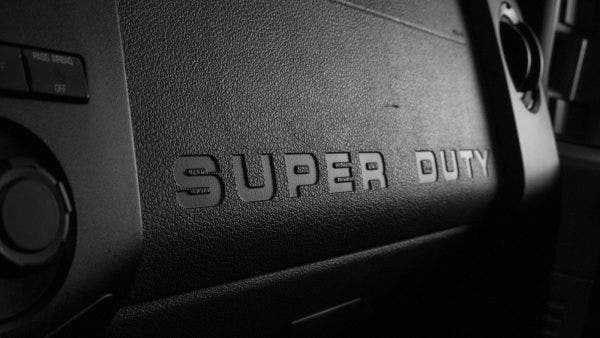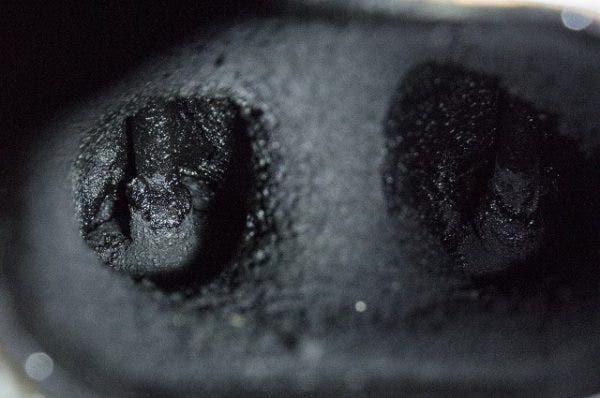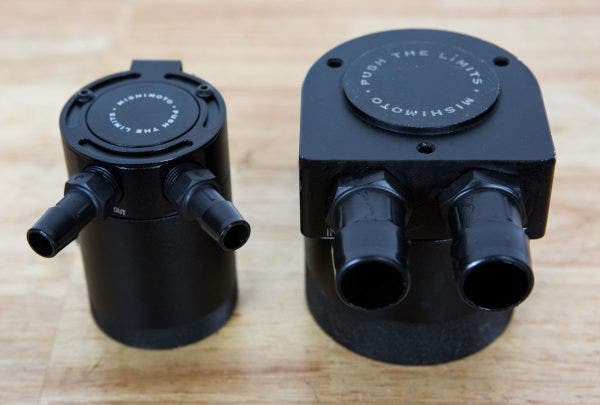
Dirty Work - Oil Catch Can Kit R&D, Part 1: Stock Review
The most rewarding work is hard work. But hard work is often dirty work. If you're a car or truck enthusiast, you know the feeling of accomplishment you get from the hard work of fixing or modifying your vehicle. You also know the struggle of trying to scrub away the grime from under your fingernails afterwards.
Few people know the reward of hard work more than those who work on diesel trucks or those who use them every day to make a living. You'd be hard-pressed to find a construction site, landscaping job, or farm without a diesel truck somewhere nearby. If the owner of that truck is really serious about hard work, it's likely a Ford Powerstroke. Ford's latest addition to the Powerstroke lineage, the 6.7L, has been serving hard-working Americans since 2011. The 6.7L Powerstroke is one of the best engines ever fitted to Ford's Super Duty trucks, but it's not without its flaws.

If you've ever pulled an intercooler pipe off a 6.7L Powerstroke, you know just how much blow-by makes its way into the intake and turbo system. This blow-by is full of carbon, oil, fuel, water, and other byproducts of combustion that have made their way past the piston rings and into the crankcase.

To keep the crankcase from becoming over-pressurized, the 6.7L vents the blow-by into the turbo inlet to be reburned with the rest of the intake air. But, before it gets back to the cylinder to be burned, the blow-by coats the turbo compressor wheel and hot-side intercooler pipe. Then, it fills the tiny channels in the intercooler and covers the cold-side intercooler pipe before spreading itself all over the intake. This blow-by eventually builds up to the point that it affects the engine's exhaust gas recirculation (EGR) system, lowers the intercooler's efficiency, and coats the intake valves in carbon; all of which reduces the amount of power produced from your 6.7L Powerstroke.

Of course, there are ways to avoid this. A CCV relocation cuts the blow-by off at the valve cover and reroutes it through a tube, then down to the ground. But that much used oil and fuel gushing onto your driveway, field, or jobsite doesn't sound like a good idea to us. Unless, of course, you really enjoy patching your driveway every couple of years. A better option would be to trap that blow-by in a container where it can be removed from the intake system and recycled with the rest of the engine oil. Ideally, this container would maintain the vacuum provided by the turbo inlet to pull blow-by out of the crankcase more effectively, preventing it from contaminating the clean oil in your oil pan. Luckily, we've been working on a catch can system for the 2011-2019 6.7L Powerstroke that does just that. Because the dirty work should be going on around your truck, not in its engine.

Before we can develop our catch can, however, we need to fully understand how the stock system works. To do that, we popped the hoods of our 2011 and 2017 6.7L trucks and began exposing the CCV system.
At first glance, the CCV system of the 6.7L is simple. Crankcase gasses exit the driver-side valve cover and are pulled back into the intake at the turbo inlet. Thanks to data and diagrams from Ford, however, we know there's something a little more complex between those two points. On both the 2011-2016 and the 2017+ models, there is an oil separator box between the valve cover and the turbo inlet. The purpose of this box is to separate the oil, fuel, and water vapors from the crankcase gasses before they enter the intake.

Inside these boxes are two different means of separating those vapors from the crankcase gasses. On the 2011-2016 models, vapor is condensed by way of a cyclonic separator. Although the name sounds complicated, this system is actually quite simple. Crankcase gasses enter the filter box at the top of a funnel-shaped cavity. There, the gas travels down the funnel, spinning with increasing velocity as the funnel gets smaller.

As the gas spins, the heavier molecules of vapor and particulate are pulled out of the gas by centrifugal force. When this vapor hits the walls of the funnel, it slows down, condenses and falls to the bottom of the funnel where it is drained back into the engine oil system. The "clean" air then exits the top of the funnel and passes into the turbo inlet.

While the outside of the 2017+ oil separation box looks similar to its predecessor, the separation system inside is a little more complex. Ford realized that the tiny cyclonic separator in the 2011-2016 models wasn't cleaning the crankcase gasses well enough. For the 2017+ model years, Ford opted for a replaceable filter system instead. In this box, a series of synthetic and paper filters clean the blow-by of particulate and vapor.

The blow-by enters the filter box from the driver-side valve cover like the 2011-2016 model. From there, the blow-by hits a synthetic material on the lid of the box, which filters out some of the larger particles. The blow-by then travels through two cylindrical paper filters that condense and filter vapors. Lastly, the remaining gas is pulled out of the box and into the turbo inlet, while the condensed vapor is allowed to drip to the bottom of the box and back into the engine.

While both of these boxes are clever in design, they are lacking in function. Judging by the amount of oil found in the intercooler pipes of both our 6.7L trucks, neither box does the job of removing vapor from the blow-by. The cyclonic separator found in the early models is too small to fully condense the oil vapor and overcome the suction from the turbo inlet. Some of the oil is condensed, but the majority of it gets pulled into the turbo.

The more complex design of the 2017+ oil separator has some major flaws as well. The paper filters are prone to clogging, and when that happens a bypass valve in the filter opens to allow blow-by around the filters. With the valve open, the blow-by is sucked into the turbo without being filtered. That also means any unfiltered blow-by left in the box drains back into the engine, contaminating the engine oil. Another valve on the outlet of the separator box closes under high load to prevent engine runaway. When that valve is closed, the blow-by pressure overwhelms the filter, the internal bypass opens and the unfiltered blow-by is forced into the engine oil.

To solve these issues, we plan to intercept the blow-by before it enters the filter boxes and redirect the blow-by to our high-flow diesel catch can. Our catch can will filter particulates and condense oil vapor better than either of the separator boxes. We'll maintain the connection to the turbo inlet so that the vacuum will pull more blow-by from the crankcase and you won't be bombarded with the smell of diesel blow-by every time you start your truck. Because the two boxes are so similar in their position and mounting, our hope is to make one kit to fit both the 2011-2016 models and the 2017+ models.

In the next post we'll measure the stock boxes and find out if we can pull it off. So, keep an eye out and, as always, let us know what you think!









